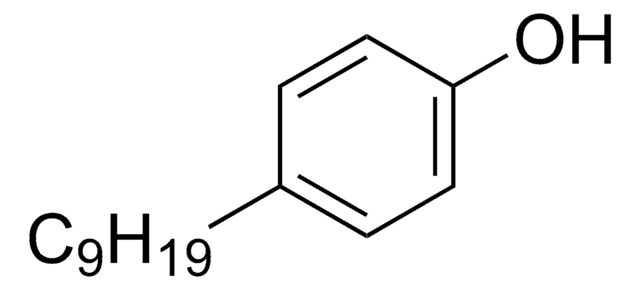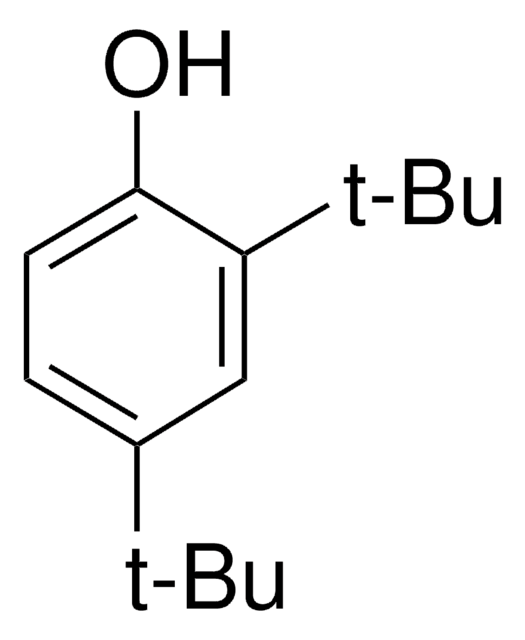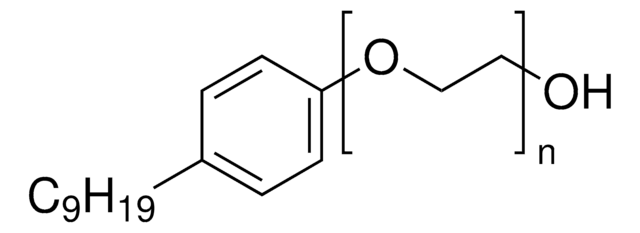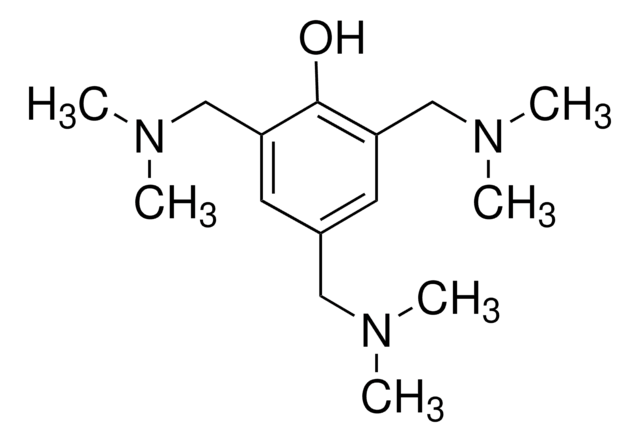290858
Nonylphenol
technical grade, mixture of ring and chain isomers
About This Item
Productos recomendados
grade
technical grade
refractive index
n20/D 1.511 (lit.)
solubility
water: slightly soluble 4.9 mg/L±0.4 mg/L
density
0.937 g/mL at 25 °C (lit.)
SMILES string
CCCCCCCCCc1ccc(O)cc1
InChI
1S/C15H24O/c1-13(2)7-5-3-4-6-8-14-9-11-15(16)12-10-14/h9-13,16H,3-8H2,1-2H3
InChI key
JSFITYFUKSFPBZ-UHFFFAOYSA-N
Gene Information
mouse ... Esr1(13982)
rat ... Ar(24208)
¿Está buscando productos similares? Visita Guía de comparación de productos
Categorías relacionadas
General description
Application
- Chlorination of Emerging Contaminants for Application in Potable Wastewater Reuse: Disinfection Byproduct Formation, Estrogen Activity, and Cytotoxicity.: Investigates the formation of disinfection byproducts, estrogen activity, and cytotoxicity during chlorination of nonylphenol in potable wastewater reuse applications, offering insights into water treatment safety protocols (Cochran et al., 2024).
- Triple-Mode Sensor Coupled by Photoelectrochemical, Electrochromic, and Spectral Signals for Sensitive Visualized Detection of Nonylphenol.: Describes the development of a sensitive triple-mode sensor for detecting nonylphenol, integrating photoelectrochemical, electrochromic, and spectral signals, which could be instrumental in environmental monitoring and industrial process controls (Cao et al., 2023).
signalword
Danger
hcodes
Hazard Classifications
Acute Tox. 4 Oral - Aquatic Acute 1 - Aquatic Chronic 1 - Eye Dam. 1 - Repr. 2 - Skin Corr. 1B
Storage Class
8A - Combustible corrosive hazardous materials
wgk_germany
WGK 3
flash_point_f
>235.4 °F - closed cup
flash_point_c
> 113 °C - closed cup
ppe
Faceshields, Gloves, Goggles, type ABEK (EN14387) respirator filter
Elija entre una de las versiones más recientes:
¿Ya tiene este producto?
Encuentre la documentación para los productos que ha comprado recientemente en la Biblioteca de documentos.
Nuestro equipo de científicos tiene experiencia en todas las áreas de investigación: Ciencias de la vida, Ciencia de los materiales, Síntesis química, Cromatografía, Analítica y muchas otras.
Póngase en contacto con el Servicio técnico












